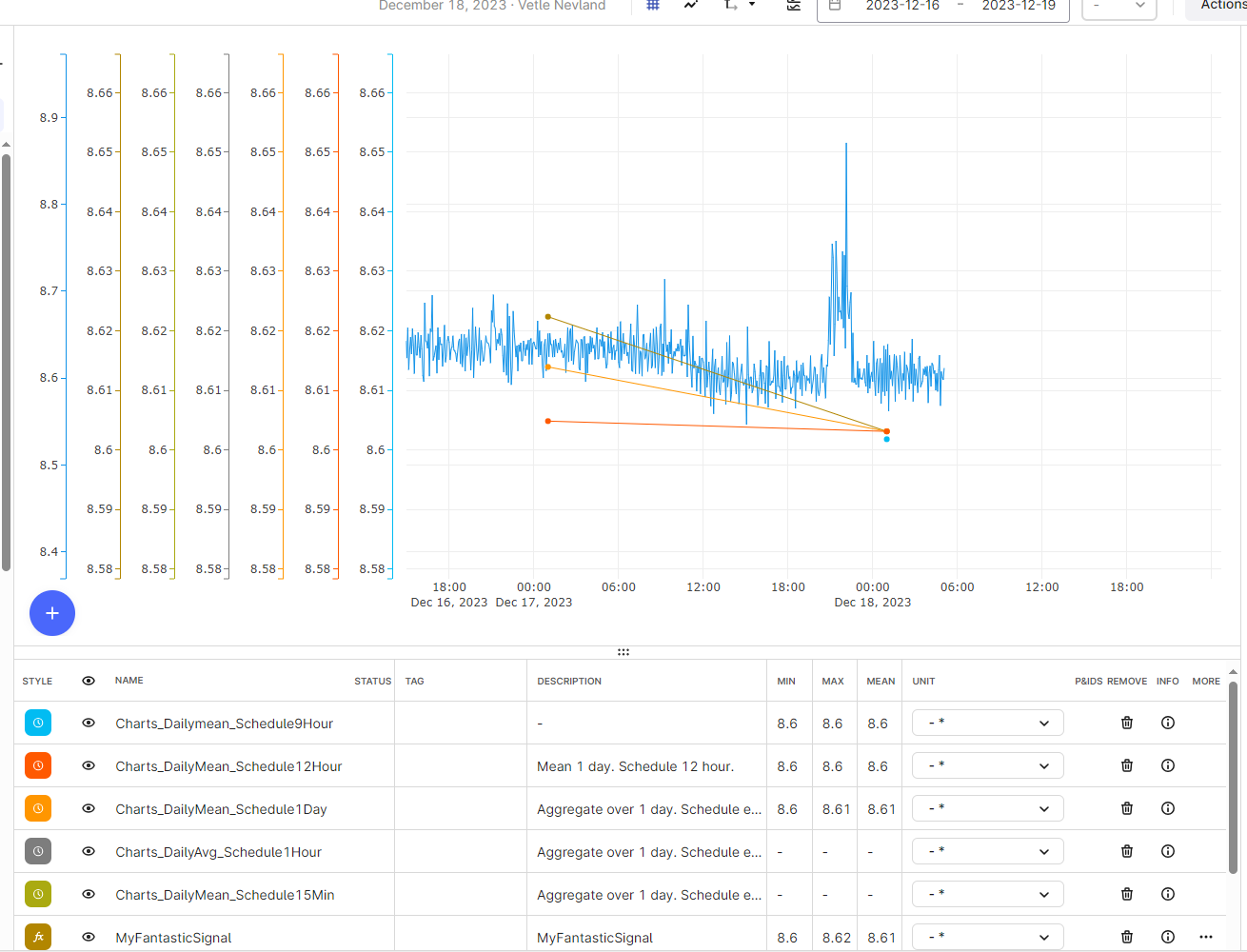I want to create a new time series in CDF based on a calculation on another time series. This can be done by saving the calculation in a schedule. But I would like to run a calculation on the full input signal (which may span multiple years back in time), but it seems like the scheduling limit is 30 days (can anyone verify?).
Is it possible to run a single calculation in Charts (spanning the entire period) and save the result to a Time Series object without going by a schedule? Or do I need to use the Python SDK for this purpose?
Thanks in advance!
Vetle.
Best answer by Neringa Altanaite
View original

 Check the
documentation
Check the
documentation Ask the
Community
Ask the
Community Take a look
at
Academy
Take a look
at
Academy Cognite
Status
Page
Cognite
Status
Page Contact
Cognite Support
Contact
Cognite Support



